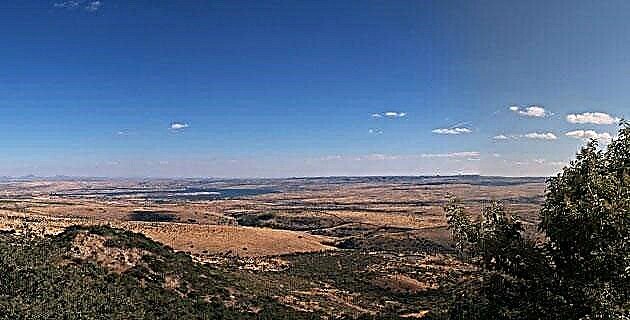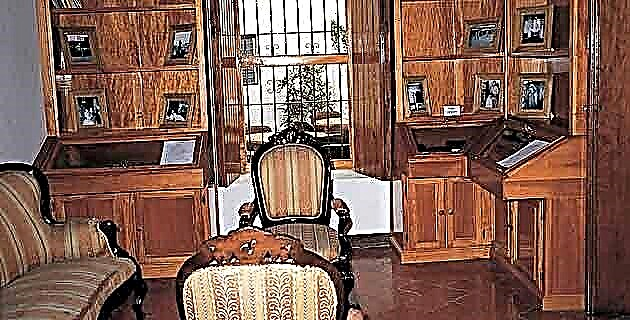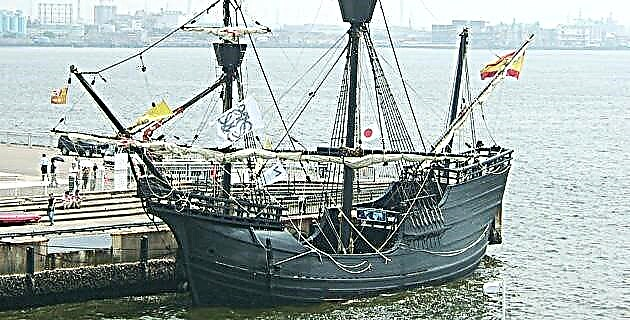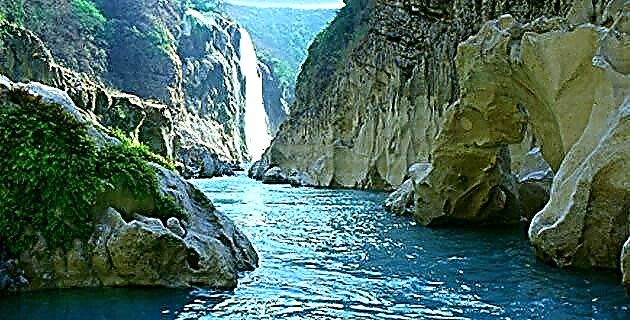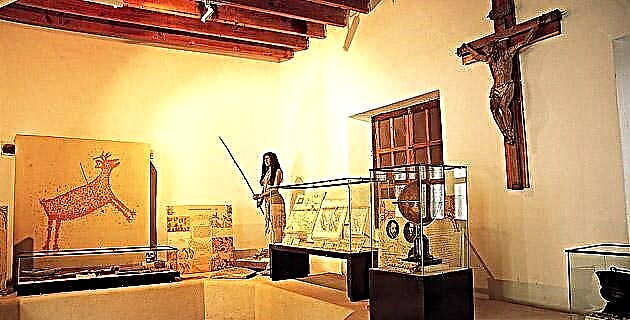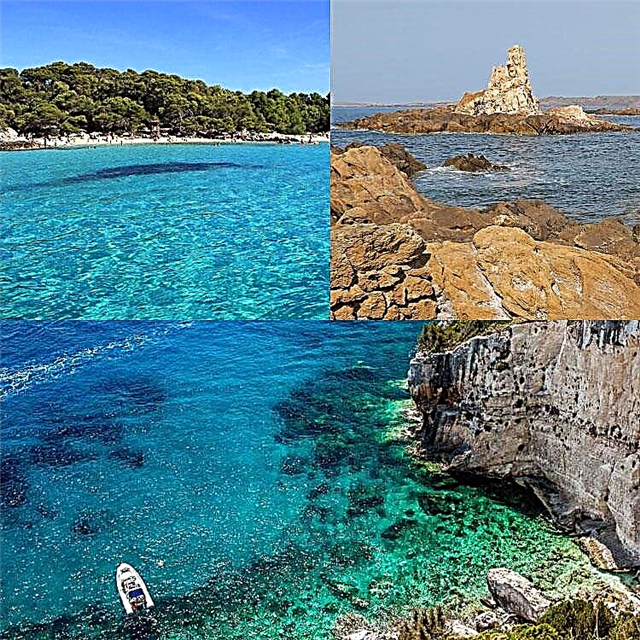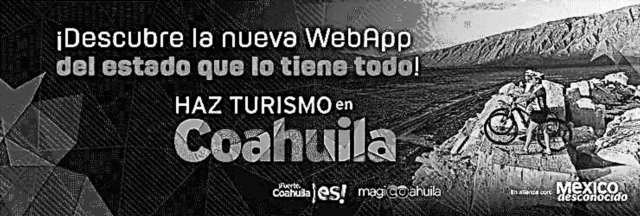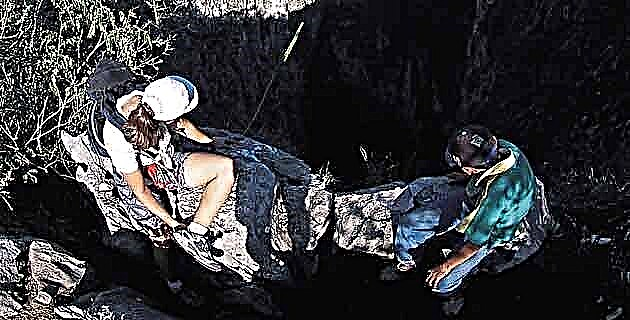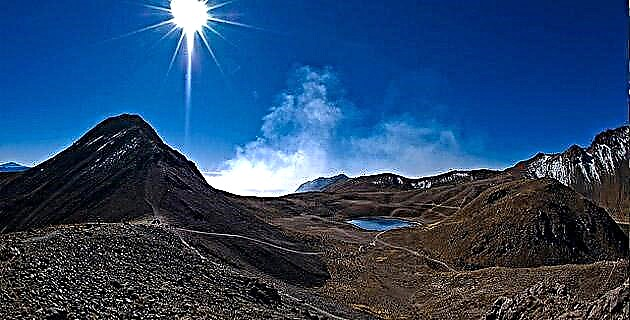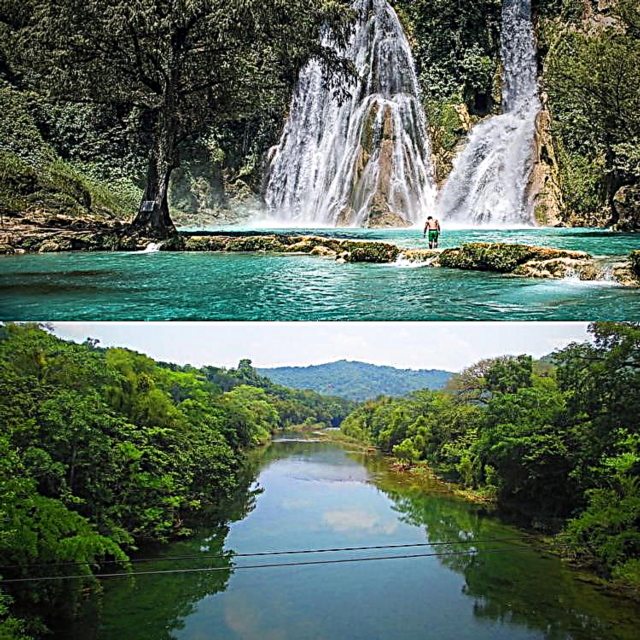The Magic Town of Xilitla is mainly known for the Edward James Las Pozas Surrealist Garden, which is its No. 1 attraction. But apart from the garden, both in Xilitla and in the closest municipalities and places there are a lot of other sites of natural interest. , architectural and culinary, that will make your trip to this sector unforgettable.
1. What is Xilitla and where is it located?
Xilitla in a municipality and Magical Town in the state of San Luis Potosí located in the southwestern area of that Mexican district, in the territory called Huasteca Potosina. It is located at an average height of 600 meters above sea level and is the rainiest municipality in San Luis Potosí. The municipal seat of Xilitla is 470 from the Mexican capital, Mexico City. The distance between the city of San Luis Potosí, the state capital, and Xilitla is 350 kilometers.
2. What is Xilitla like?
Xilitla is a typical municipality of the Huasteca Potosina, with its rainy climate, its exuberant vegetation, its fertile lands and water, a lot of water, which falls from the sky and flows in thousands of streams, streams and waterfalls, accumulating in delicious pools. It is a territory that has changed very little from past times, since industrial penetration has been very low. There are few plains and it also has high mountain areas, above 2,500 meters above sea level.
3. Where does the name Xilitla come from?
"Xilitla" is a pre-Columbian word that, according to the most widely agreed version, derives from the Nahuatl voice "zilliy", meaning something like "place of little snails" or "place of small snails." Probably, in pre-Hispanic times, in the The Xilitla mountains were more abundant with land snails than now. A second version indicates that the word "Xilitla" means "place of prawns"
4. When was Xilitla founded?
The colonial history of Xilitla began around 1537, when a group of evangelizers from the Order of San Agustín began their tours of the foothills of the Sierra Madre Oriental trying to convert the indigenous people to the Christian faith. Fray Antonio de la Roa was the first Spaniard to spread the Gospel in the territory of present-day Xilitla and miraculous events are attributed to him. The convent of San Agustín de Xilitla was completed in 1557, serving at the same time as a temple, a place of seclusion and a fortress to protect against the incursions of the Chichimecas.
5. What attractions does Xilitla have?
The main attraction of Xilitla is the Surrealist Garden Edward James Las Pozas, a beautiful property of about 400 thousand square meters that is both an immense garden and an open-air art gallery, whose works and buildings were built by the British artist and millionaire Edward James. In addition to the garden, Xilitla has other architectural and natural attractions ideal for walking and observing nature.
If you want to know more about Edward James's Surreal Garden click here.
6. Who was Edward James?
He was a wealthy artist by birth, after inheriting an immense fortune amassed by his father, William Dodge James, who had been a railroad magnate, well known in high British circles and a personal friend of King Edward VII, whom he honored by calling Edward her only son. Edward James was a patron and friend of great artists when they were in their infancy, such as Salvador Dalí, René Magritte and Pablo Picasso.
7. Was James surreal?
So is. James embraced surrealism, the fashionable artistic trend in his youth, first as a poet, writing verses that he published in a magazine financed by himself, and later as a visual artist, after meeting and forging friendship with the great artists who promoted this school. of art. Edward James appears in some portraits and masterpieces painted by Salvador Dalí and René Magritte.
8. And why did you make your Surrealist Garden in Mexico?
Finding himself in a Europe devastated by World War II, with an immense fortune to spend and little to do, Edward James came to America, first living for a time in American California. He had come from Europe with the idea of building a kind of earthly paradise in which to live and began to search for the dream territory. Her friend, the surrealist artist Bridget Bate Tichenor, whom she met in Hollywood, recommended that she seek her corner of Eden in Mexico.
9. How did Edward James come to favor Xilitla?
After arriving in Mexico, James met in Cuernavaca a telegrapher of Yaqui origin named Plutarco Gastélum. Someone had commented to James that in a place called Xilitla, in the Huasteca Potosina, orchids and other flowers grew with amazing ease. Edward James toured the Huasteca with Plutarco Gastélum as a guide and was delighted with Xilitla, buying a 40-hectare plot of land in the mid-1940s, where he began to build his garden in the 1960s.
10. What are the attractions of the garden?
The garden is a vast space of plants, flowers, forests, streams, paths and pools. In fact, it bears the name of Las Pozas because of the large number of these small bodies of water that are in the place. 36 large surrealist constructions and sculptures are scattered around the property. Among these are The structure of three floors that can be five, The bedroom with a roof in the shape of a whale, Stairway to heaven, The house of Don Eduardo, The cinema, The house of the peristyle, The aviary, The summer palace and The terrace of the tigers.
11. What are the main characteristics of works of art?
The artistic constructions are a mixture of architectural art with sculptural art. They have numerous empty spaces and are interrupted, giving the impression that they were unfinished works. Edward James believed that the only way for a work of art to preserve or enhance its artistic value was to leave it unfinished, so that it could continue to grow in space and time. Most were cast into concrete with the help of workers from Xilitla. Architecturally, they are inspired by Mesopotamian, Egyptian and Gothic art.
12. Being such a large space, how do you keep the garden in good condition?
Vegetation in Xilitla grows rapidly and weeds invade the landscaped spaces and the works of art themselves. After the death of Edward James in 1984, the Surrealist Garden went through a stage of semi abandonment that caused the deterioration of the natural areas and the buildings. Fortunately, in 2007 the property was bought from the family of Plutarco Gastélum, who had inherited it, in a joint effort by the government of San Luis Potosí, the Cemex company and other participants. The administration of the Surrealist Garden became the responsibility of a foundation that ensures its conservation.
13. Where do I stay in Xilitla?
Among the accommodations that visitors to Xilitla recommend the most is El Hostal del Café (Niños Héroes, 116). To get in tune with the town's main attraction, the Surrealist Garden, the Hostal del Café has a pleasant garden and offers the warmth of care provided by its owners. Other options are the Hotel Guzmán (Calle Corregidora, 208), Hotel Aurora (Niños Héroes, 114) and Hotel Dolores (Matamoros, 211).
14. Is there a museum in Xilitla?
The El Castillo inn is also a kind of museum about Edward James and his stay in the town of Potosí, with an exhibition of some photos and personal documents of the surrealist artist. The sample also includes some of the tools used in the construction of the garden. The inn-museum is located next to what was once the house of Plutarco Gastélum in Xilitla.
15. Are there any other particular attractions in town?
Xilitla is a quiet Huasteco town that lives breathing the pure air that comes down from the forests and coffee plantations of the mountains, and its main attractions are integrated into the surrounding nature. A cultural jewel of Xilitla is the temple and former convent built by the Augustinians in the mid-16th century, which was the first religious building to be built in the current state of San Luis Potosí. The convent complex managed to resist 5 centuries of wars, in the midst of which it was devastated, mutilated and abandoned, but it always found a way to survive to be today the main Xilitlan historical testimony.
16. Among the natural attractions of Xilitla, which are the most remarkable?
Since 2011, Xilitla has been a Mexican Magical Town, mainly thanks to the Surrealist Garden, which is a must-see in the municipality. However, there are other natural attractions that allow the visitor to round off an unforgettable stay. The Sótano de Huahuas is an abyss almost 500 meters deep that is a paradise for bird watchers who enter and exit the vertical cavern. Mountaineering enthusiasts count on the La Silleta massif and for caving enthusiasts there is the El Salitre cave.
17. Are there other towns and places near Xilitla that are worth visiting?
So is. For example, near Xilitla, ascending the mountain, is the typical town of Ahuacatlán de Jesús, a peaceful town at almost 1,200 meters above sea level, with a delicious mountain freshness. Other nearby places and municipalities, with interesting attractions to visit, are Aquismón, Ciudad Valles, Tamtoc, Tamasopo, Matlapa and Tancanhuitz.
18. What can I see in Aquismon?
Xilitla borders Aquismon to the north. In this municipality is the well-known Sótano de las Golondrinas, a karst cave recently discovered in 1966, considered by specialists as the most beautiful vertical cavern on the planet. It is more than 500 meters deep and it is a sanctuary for birds, mainly swifts and not swallows. Another great attraction of Aquismón is the Tamul Waterfall, which at 105 meters high, is the largest in the state of San Luis Potosí.
19. What are the main attractions of Ciudad Valles?
This head city of the municipality of the same name is located 90 kilometers from Xilitla. Ciudad Valles is a town with a good infrastructure of tourist services, so many interested in knowing the Huasteca Potosina stay there, taking daily walks and returning to the base. Among its natural attractions, the Cascadas de Micos stand out, some stepped waterfalls that are frequented by fans of extreme sports. Also nearby are the sulphurous hot springs of Taninul.
20. What interesting things are there in Tamtoc?
Another place close to Xilitla is Tamtoc, an archaeological site located in the municipality of Tamuín. Tamtoc was one of the great urban centers of the Huasteca civilization in San Luis Potosí. Among the main structures of the site are El Tizate, Paso Bayo, which is believed to have been a religious building; The Corcovado, a circular structure probably dedicated to commerce and mass gatherings; and the Venus of Tamtoc, a female sculpture also called The Scarred Woman.
21. What do I see in Tamasopo?
Tamasopo is 140 kilometers from Xilitla on the same road as Ciudad Valles. It is worth going to this municipality of Potosí just to admire its waterfalls, waterfalls formed in the course of the Tamasopo River. The Bridge of God is a waterfall with a cavern in which the rays of the sun, in contact with the waters of the current, create a beautiful effect on the stalactites, stalagmites and other formations of the cavity. Another place of interest is the Ciénaga de las Cabezas, an ecosystem inhabited by interesting species of fauna.
22. What are the main attractions of Matlapa?
The municipality of Matlapa is located near Xilitla on the eastern side. Matlapla is predominantly mountainous territory, with green mountain slopes watered by the Tancuilín River and its tributaries. Like Xilitla, it has a large number of streams, springs and pools, ideal for the visitor interested in contact with virgin nature, regardless of the comforts found in the most developed tourist places.
23. What do you recommend seeing in Tancanhuitz?
Also near Xilitla is the Potosí municipality of Tancanhuitz. Among the sites of interest in Tancanhuitz are the Church of the 149 steps, the La Herradura Dam and the Cueva de Los Brujos. Another attraction are some nearby farms, among which the Don Chinto one stands out.
24. What are the main festivals in Xilitla?
The patron of the town is San Agustín de Hipona, venerated in the 16th century temple that is the main architectural and historical jewel of Xilitla. Saint Augustine's Day is celebrated on August 28, the day of the saint's death in the ancient Numidic city of Hippo Regius in 430 AD. The San Agustín de Xilitla fair takes place between the end of August and the beginning of September. Occasionally, Xilitla is the venue for Huastecan meetings and festivals, dedicated to the cultural manifestations of the different towns and states of the Huasteca Region.
25. What is the most recommended food in Xilitla?
The most important dish in Xilitla is zacahuil, a delicacy that is the star of Huasteca cuisine. It is prepared by filling a huge corn masa tamale with a mixture of meats, the most commonly used being pork and chicken. The meat is seasoned with chili peppers, aromatic herbs and other ingredients from the fertile lands of Xilitla. Then the tamale is wrapped in leaves of a banana-like plant and cooked. Other gastronomic options are xochitl, a chicken broth with avocado, bocoles and enchiladas from Potosí.
26. Where do I eat in Xilitla?
In Xilitla you have different options to taste Potosi and international food. La Huastequita is a simple establishment that offers Huasteca food, the typical enchiladas of the region being highly recommended. Querreque is located in the central square of Xilitla and there are excellent opinions about some of its dishes, such as chicken washed down with peanut sauce. Los Cayos restaurant is known for its enchiladas with jerky. Other options to eat in Xilitla are Ambar, Las Pozas and La Condesa.
27. Is it true that in Xilitla I can have excellent coffee?
The mountains of the Huasteca Potosina present the appropriate altitude, humidity and shelter conditions for coffee production. Xilitla is surrounded by coffee plantations and part of the beans harvested in the foothills of the mountains are benefited in the same municipality for their enjoyment by tourists in restaurants and cafes. All Xilitlan homes have the aroma of coffee and the locals look for any excuse to chat over a steaming infusion. If you want to buy something authentically Xilitlense, take a package of artisan coffee.
28. What sports can I practice in Xilitla?
The topography and hydrography of Xilitla and its nearby municipalities offer land spaces and water courses suitable for practicing a great variety of entertainment and sports, both normal and extreme. Rafting can be done in the steepest and most powerful sections of the currents and in the cellars and caverns rappelling and climbing enthusiasts have interesting challenges. Of course, there are the more classic and safe options, not so rich in adrenaline, of hiking and mountain biking.

We hope that this Xilitla guide contains everything you need to know so that you have a happy stay in this Huasteco Magical Town. See you soon on another wonderful ride.

